Most cakes, cookies, muffins, and scones are all made from the same ingredients: flour, sugar, butter, salt, eggs, chemical leaveners (whether baking soda and/or baking powder), milk, etc. Yet even though most baked goods contain the same basic ingredients, you can combine them in different amounts and in different ways to make a cake instead of muffins, or a quick bread instead of a cookie.
There are many ways you can combine basic baking ingredients to achieve the desired results, and those results aren't just dependent on the recipe in front of you, but also on your baking techniques and mixing methods.
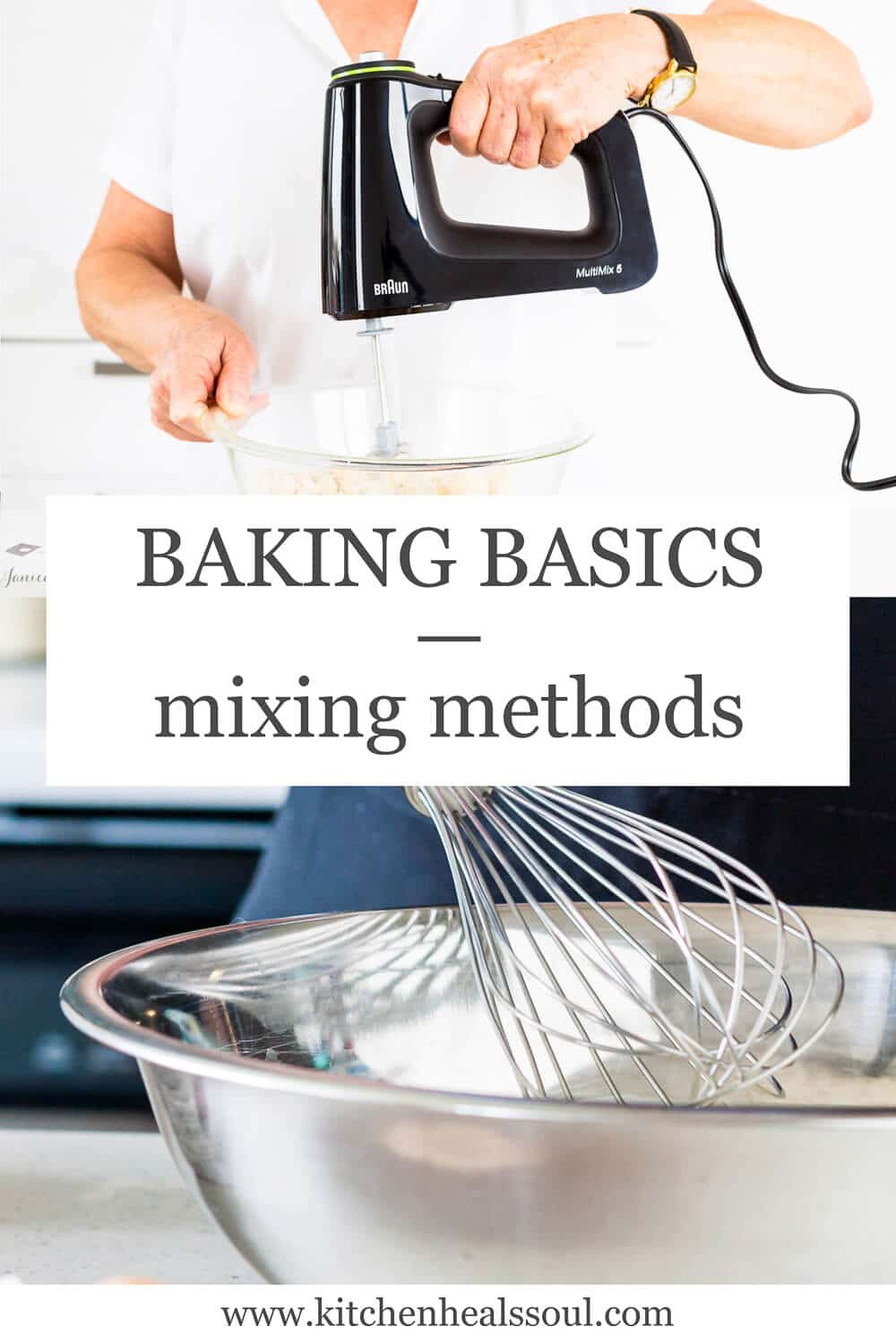
Jump to:
Muffin method
The muffin method, also known as the two-bowl method, is the technique you would use to make muffins (duh!), but also quick breads, and even pancakes. This is the easiest mixing method you can use. For the muffin method, you use two bowls:
- All your dry ingredients go in one bowl, so the flour, chemical leaveners, salt, spices, and even the sugar, and are all whisked together
- All your wet ingredients go in a separate bowl, usually eggs, milk (or an acidic dairy product, like buttermilk, sour cream, or yogurt), vanilla extract, and oil (or melted butter).
- Once the two separate bowls of ingredients are well mixed, you then combine the two bowls into one, and briefly mix just to incorporate the two. I like to add the dry ingredients to the bowl of wet ones because that seems to result in fewer lumps.
For the muffin method, you don't need any special equipment. All you need is a couple of bowls, a whisk, and a large spatula or wooden spoon. You definitely would need to invest in muffin pans too, if you plan on using this method to make muffins. If you want to know how to mix cake batter without a mixer: use the muffin method!
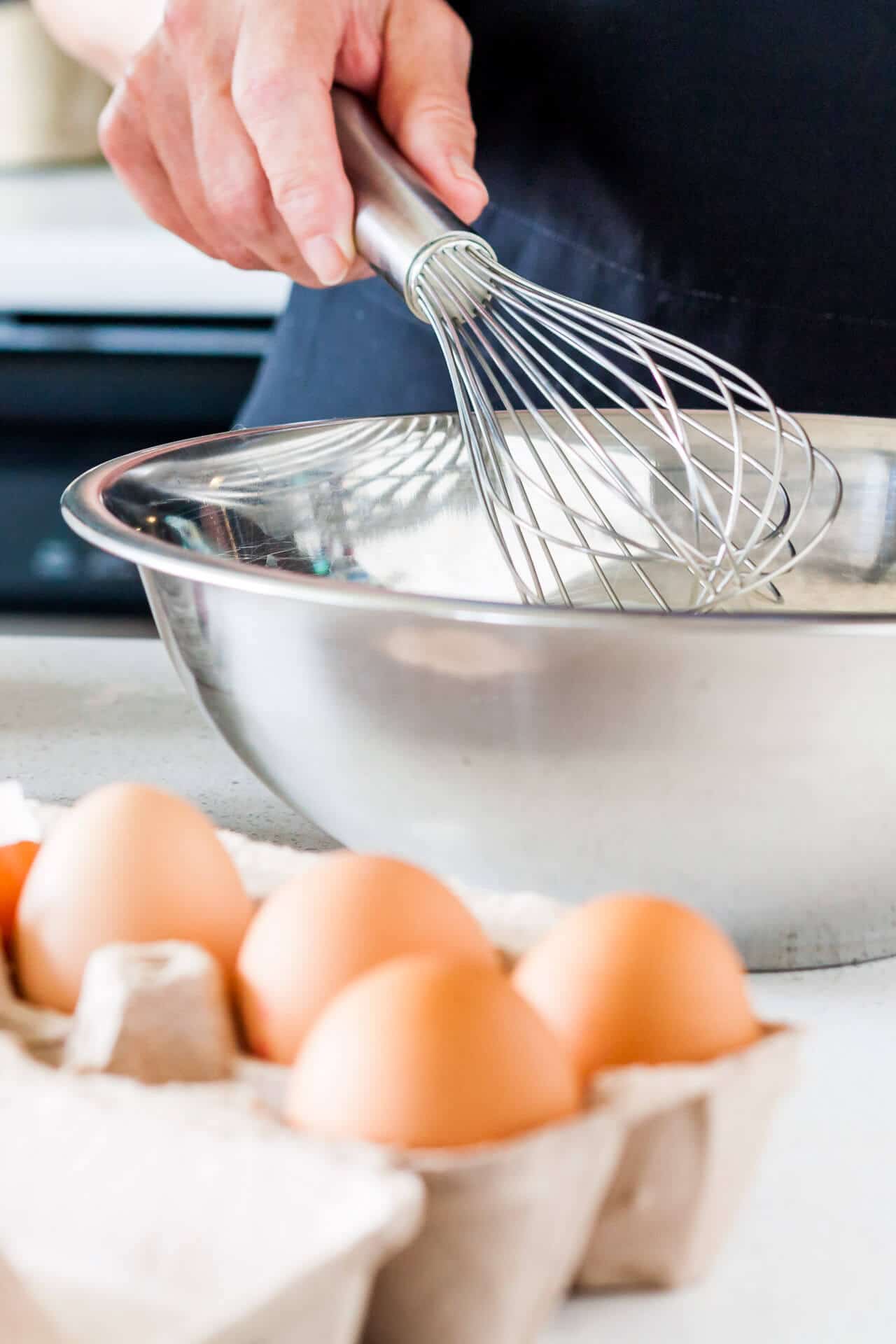
If you analyze the baking ingredients in recipes that follow the muffin mixing method, you might notice that these recipes contain
- a liquid fat, like canola oil or melted butter, which are easier to incorporate for this method
- a fair amount of liquid
- a higher amount of chemical leaveners than typical cake and cupcake recipes. In fact, these recipes rely entirely upon the gas/air formed from chemical reactions of chemical leaveners as the muffin bakes, and not mechanical methods (like whipped eggs or the volume created from beating together butter and sugar).
You use the muffin method to make this eggless banana bread, greek yogurt pancakes, and these chocolate zucchini muffins. In all recipes using the muffin method, it's very important not to overmix the batter, which would lead to more gluten developing, causing your baked goods to become tough and more bread-like, which isn't the goal here.
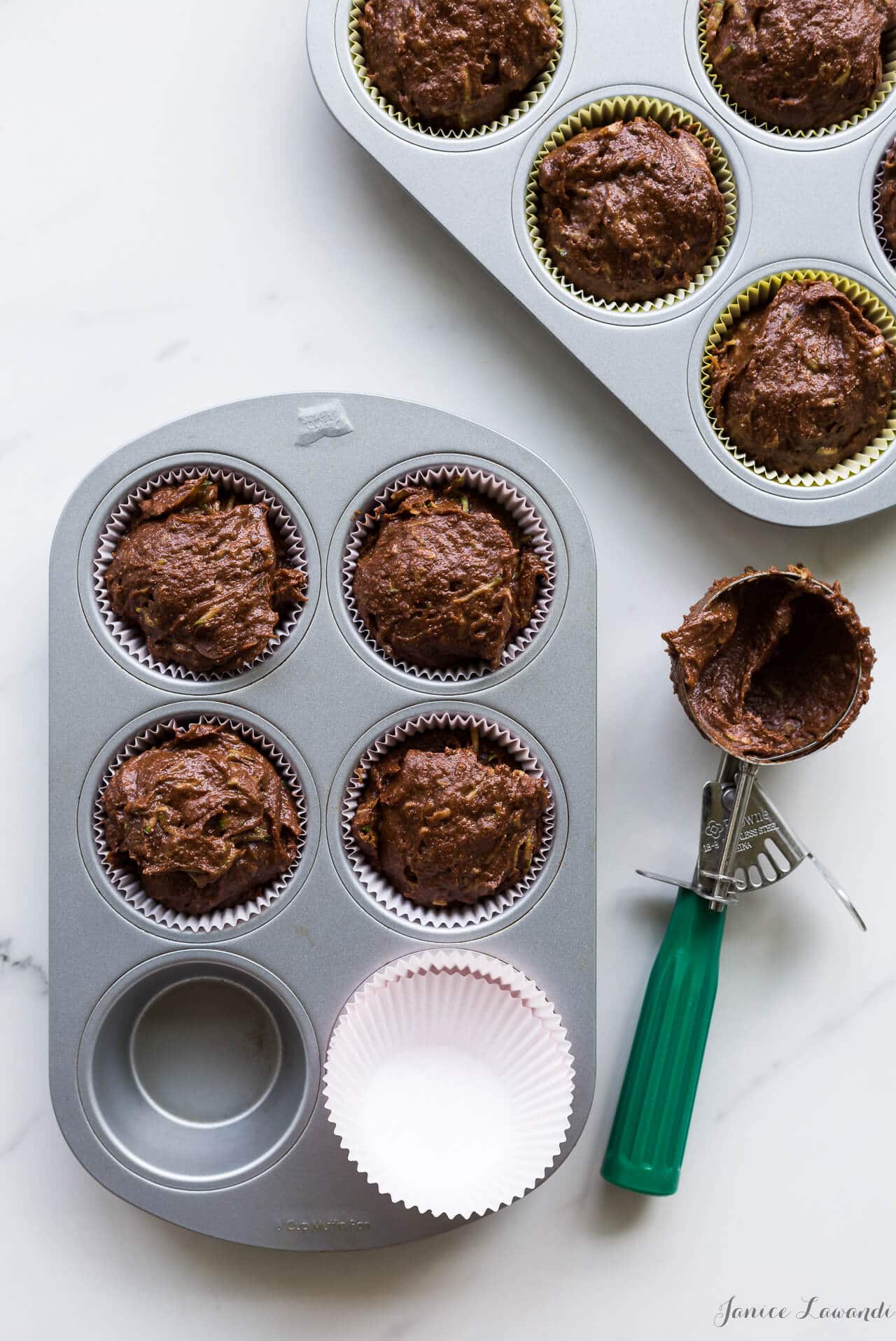
Creaming method
The creaming method is used to make cakes and also cookies. When you start a cake or cookie recipe by "creaming the butter and the sugar until light and fluffy" or "beating the butter with the sugar", you are using the creaming method of mixing and by doing so, you are mechanically incorporating air into the recipe as of this first step of mixing.
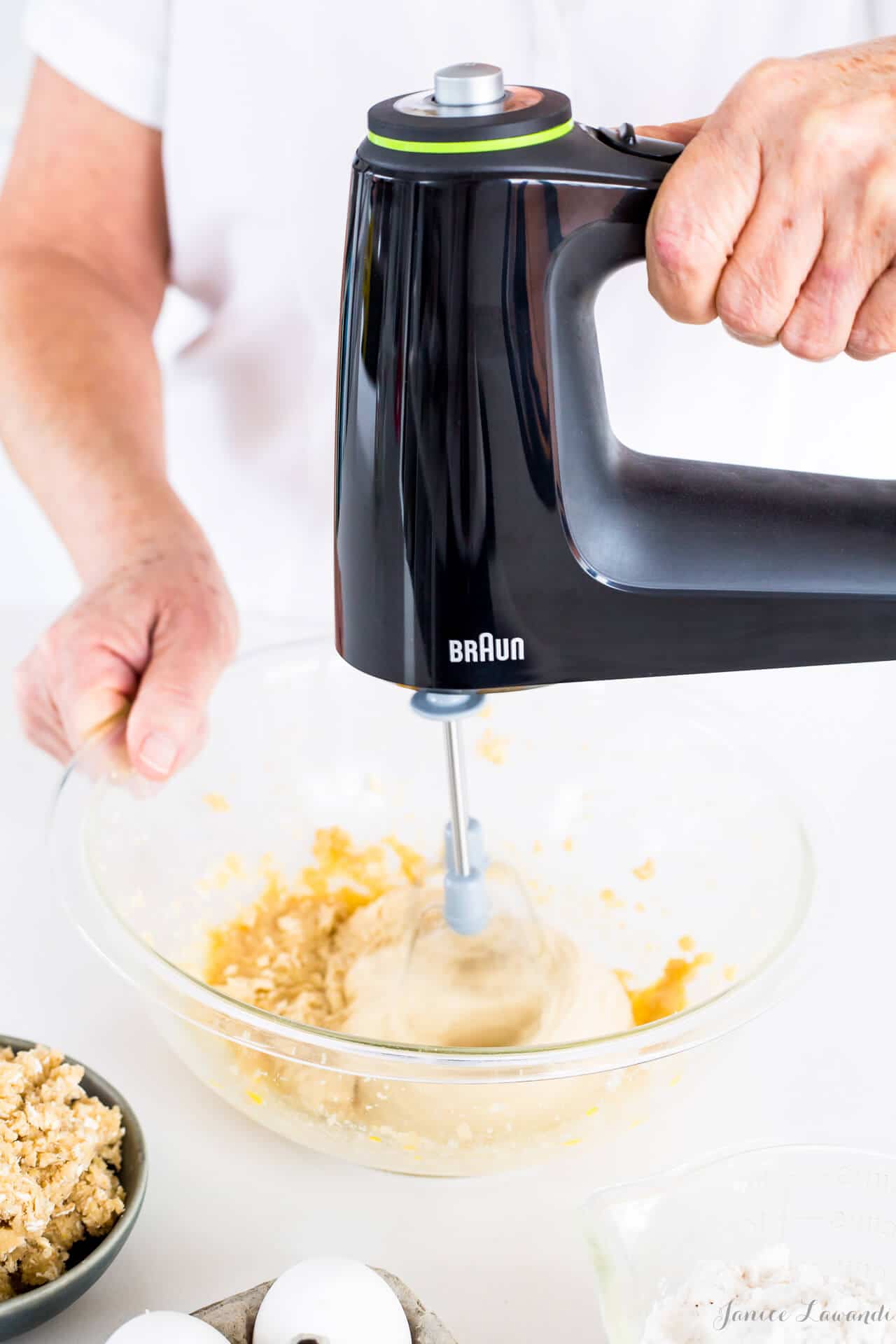
Because the creaming method involves incorporating a ton of air into the mixture of butter and sugar, it's easiest to do this step with a stand mixer or an electric hand mixer so that can lighten the mixture as much as possible. You can also do the creaming method by hand with a wooden spoon (or even a plastic pastry scraper), but the resulting baked goods may be a little denser in the end:
- Combine the softened butter with the sugars in the recipe and whip them together for several minutes to form a creamy, light, fluffy mixture. Ideally, for cakes, the mixture at this stage would resemble a fluffy frosting.
- Add the eggs, one at a time, being sure to mix well between each addition, and scraping down the sides of the bowl as needed to make sure all the ingredients are properly mixed.
- Finish with the dry ingredients (flour, chemical leaveners, salt, spices...), mixing just enough to combine everything, without overworking the batter. The goal is to mix as little as possible at this point, just until the flour disappears.
When you add the dry ingredients, some recipes may suggest alternating with a liquid (like milk or buttermilk). In these recipes, you start adding the flour (⅓ of the volume) first, then the liquid (½ the volume), then more flour (⅓ the volume), then more liquid (½ the volume), and then you end with the last of the flour (the remaining ⅓).
Though it's not essential to end with the dry ingredients, I have noticed that if you end with the liquid, sometimes it's harder to get an evenly mixed batter and the resulting baked goods may have an odd texture in places. Odd textural imperfections also occur if you don't fully incorporate the creamed butter and sugar mixture with the eggs. You end up with small patches of buttery sugar in the cake batter that are visible on the baked cakes. It's not the end of the world, but it's not ideal.
The creaming method has to start with softened butter, not melted butter, in order to work its magic. Melted butter can't trap air the way softened butter can, nor can liquid fats (like canola oil). Ideally, all your ingredients would start at the same temperature, room temperature, so that they emulsify properly.
We use the creaming method to make cookies, like these chewy oatmeal cookies with chocolate and peanuts, and to make cakes, like this classic vanilla cake with milk chocolate frosting. The creaming method is also used to make pâte sucrée for tarts, which is the base for these Earl grey panna cotta tarts, or this raspberry chocolate tart.
Reverse creaming method (used in high ratio cake recipes)
The reverse creaming method isn't as popular among home bakers, but it is definitely worth exploring! The basic steps are as follows:
- Combine all your dry ingredients with the softened butter to form a coarse crumble (including the sugar!).
- Combine all the liquid ingredients in a bowl with a pouring spout (like the eggs, milk or buttermilk, vanilla, etc)
- Slowly add the liquids to the crumble mixture.
This mixing method is very similar to the muffin method and also reminds me of making cake mix from a pouch containing all the ingredients except for the oil, milk, and eggs. For the reverse creaming method, often the weight of sugar is much greater than the weight of flour, which contributes to them being more moist and fluffier, and also reduces gluten development during mixing.
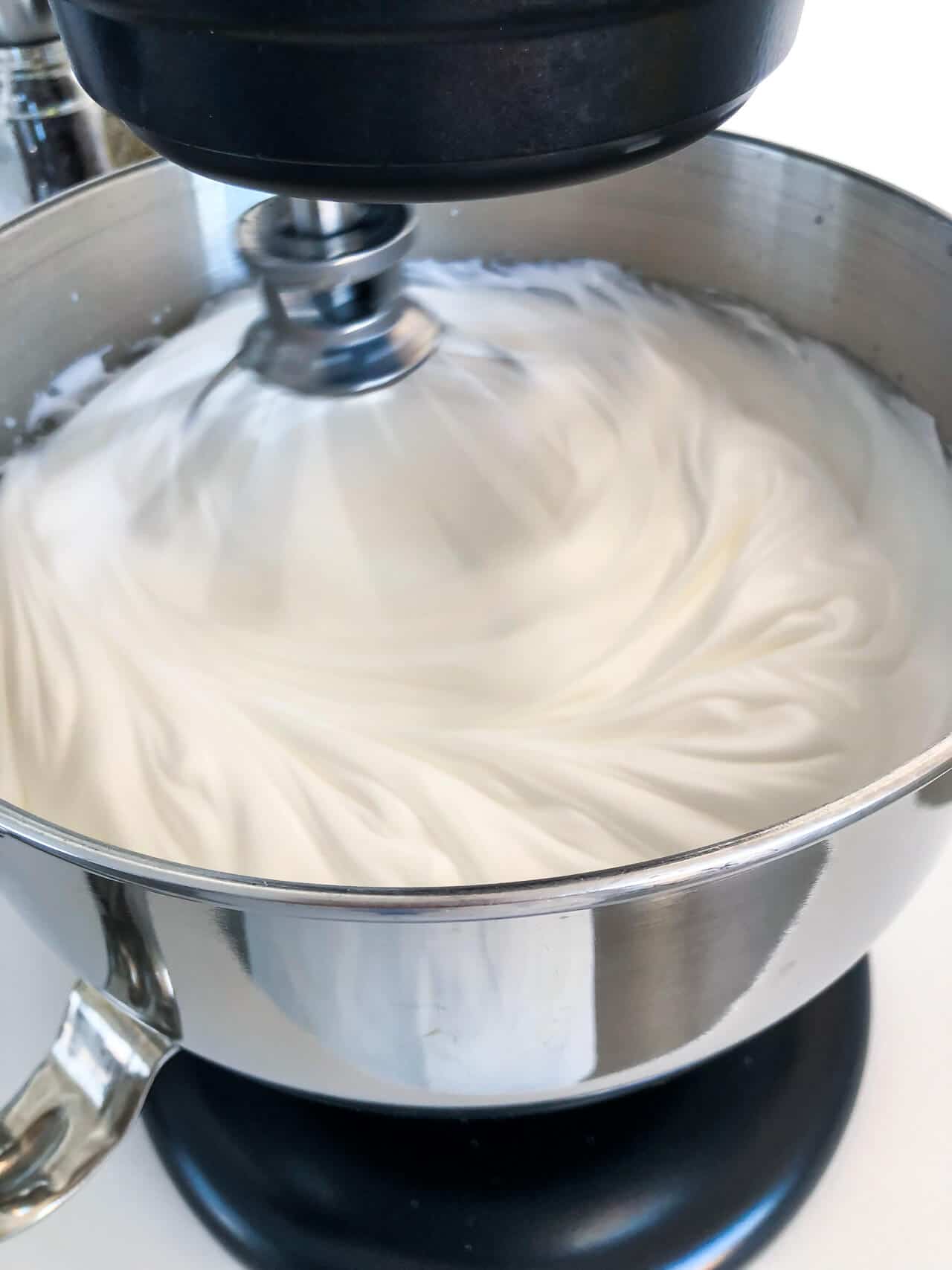
Whipped eggs method
The eggs and sugar are whipped together to the "ribbon stage" for this simple gluten-free chocolate cake that is a riff on a flourless chocolate cake, also called fallen chocolate cake. A sponge cake like this hot milk cake is another example of a cake made with whipped eggs. These cakes often have less fat in them (sometimes even no fat, like the angel food cake). Some involve whipping whole eggs with sugar (for a génoise, a basic sponge cake, etc), and others involve whipping egg whites only with the sugar (like for angel food cakes). For cakes that are made from whipped eggs, the steps are as follows:
- whip whole eggs or egg whites only with the granulated sugar:
- For whole eggs, you are aiming to whip them until the mixture has tripled in volume, and becomes very light in colour, and when the beater is lifted, the whipped mixture will leave a semi-stable ribbon on the surface that takes a few seconds to settle into the rest before disappearing.
- For egg whites, you are aiming to whip the white to form something like a very thick, glossy, stable meringue with a stiff peak that is NOT dry. If your whites are dry or start to look curdled, you may have overwhipped them before the sugar was added.
- fold in dry ingredients VERY gently in order to incorporate them, without losing the air and volume you built up.
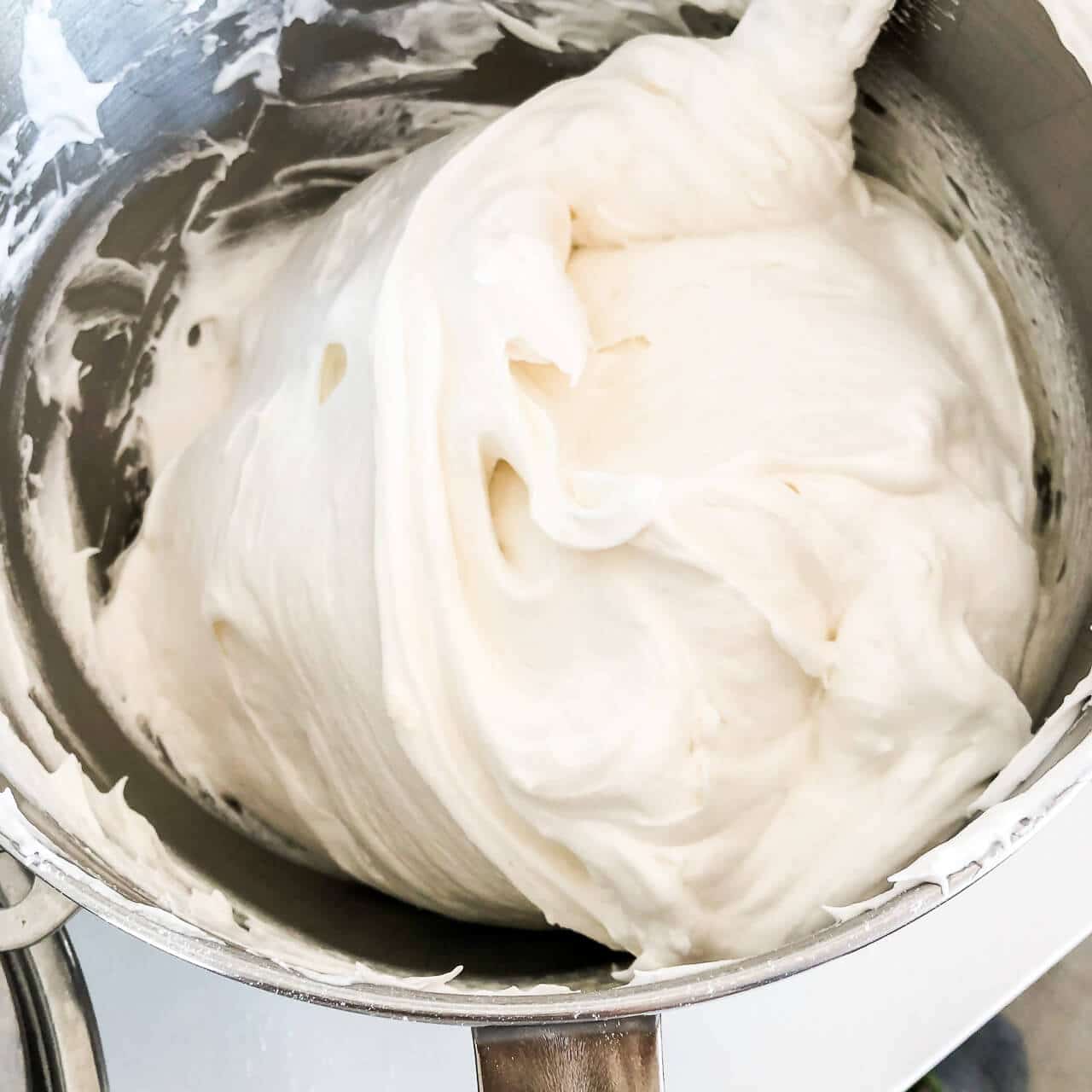
Flaky dough method
You use this flaky dough method for pie dough, scones, biscuits, and rough puff pastry:
- All the dry ingredients go into a big bowl (flour, salt, maybe a little sugar)
- The cold butter is cut into small cubes and chilled again until it is very cold.
- Add the cubes of cold butter to the big bowl of dry ingredients and using a pastry cutter, two knives, or your fingertips, work the butter into the flour to create a very coarse crumble mixture.
- Add the liquid (usually water, sometimes it can be milk and/or an egg), and work it in to form a shaggy dough
- Gather the shaggy dough and shape it into a flat disk
- Chill for at least 30 minutes before using
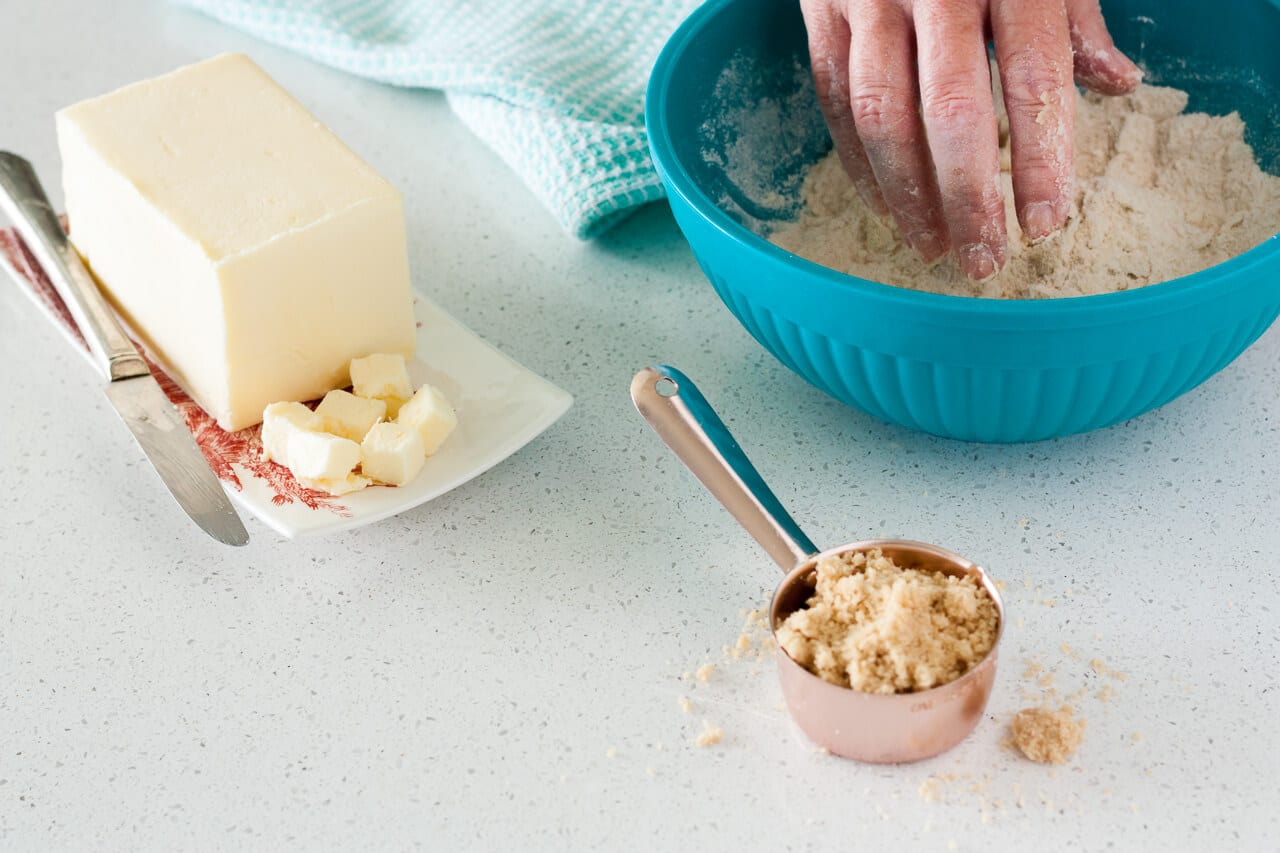
The key to this method is the temperature and everything should be cold. Ideally, you would be working in a cool kitchen, with cold ingredients, and butter that is very cold from the fridge. It's important to keep the butter pieces distinct and to avoid overworking the butter in the dough because if you overwork it, the butter will melt into the flour, and essentially disappear, leading to a more gritty product, with no flaking, that won't rise much at all (especially if you are making scones, biscuits, and rough puff).
Laminated dough method
If you've ever made homemade croissants or puff pastry, then you have used the laminated dough method.
- Make a dough of flour, water, salt, and maybe some butter, but not too much. The dough may contain yeast if you are making croissants
- Make a butter block that consists of a lot of butter that is shaped into a block and chilled until firm.
- Roll out the dough into a big square, and wrap the butter block in that dough and pinched shut.
- Roll and fold, chill, and repeat the rolling and folding at least 4 times for croissants and at least 6 times for puff pastry
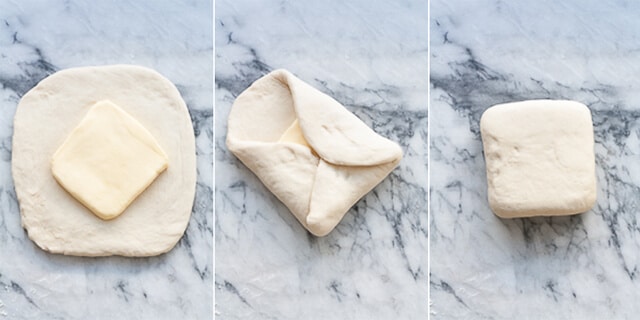
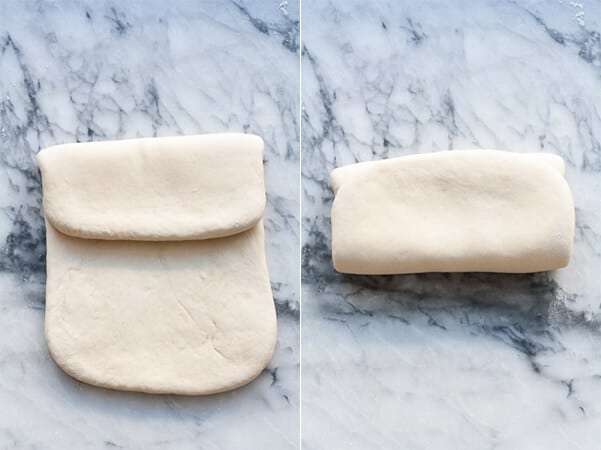
The idea behind the rolling and folding is to create hundreds of very thin layers of dough separated by very thin sheets of butter. This way, when the pastry is in the oven, the butter will melt, the water will evaporate, and the steam will push open those layers leading to a very light, buttery, flaky pastry.
Flaky pastry is a labour of love, and most of us would rather buy it from our favourite bakeries. Bakeries will use large sheeter machines for the rolling and folding, which makes the process much faster, easier, and less stressful. The resulting flaky pastry is usually finer than what you can achieve at home with a rolling pin.
Bread method
If you're making homemade bread, you'll notice that you first have to mix the ingredients of the dough, then you have to knead it for an extended period of time, upwards of 10 minutes for something like a homemade brioche made in a stand mixer. The kneading is essential to rearranging the flour proteins into an elastic, supple, stretchy network called gluten, which will allow the dough to trap air in stretchy bubbles as the dough rises.
If you lack patience, you can skip the kneading and make bread like this no-knead cinnamon raisin bread. It takes a little longer for the dough to rise, but the results are pretty fantastic!
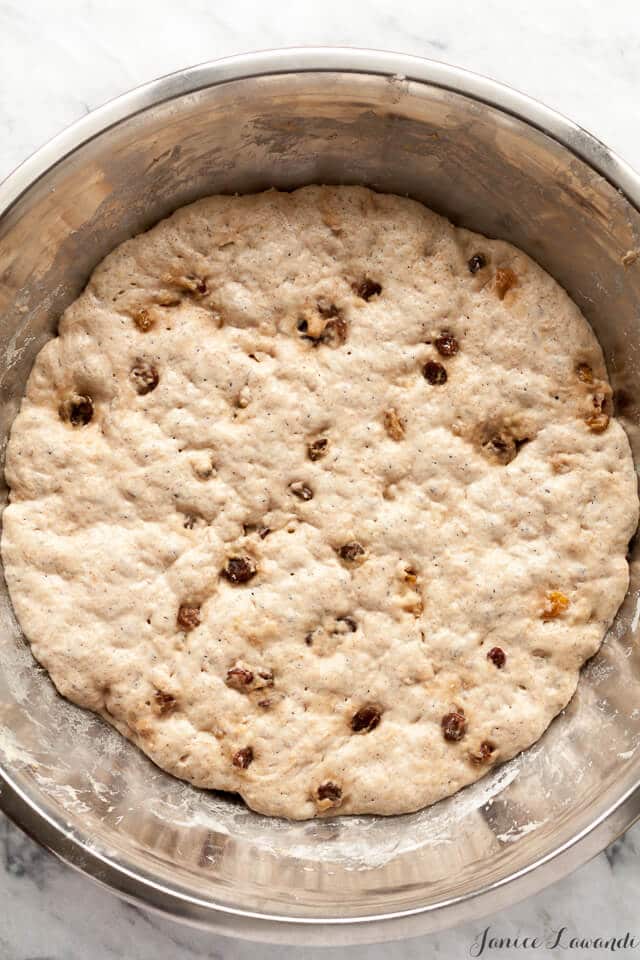

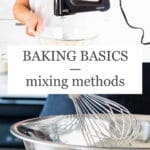
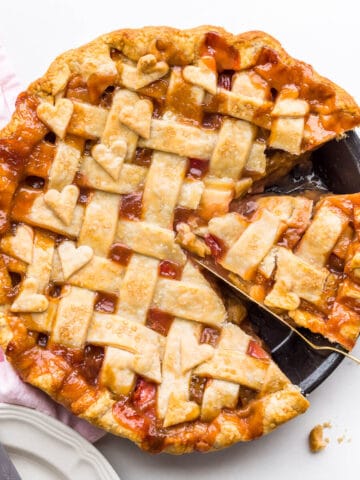
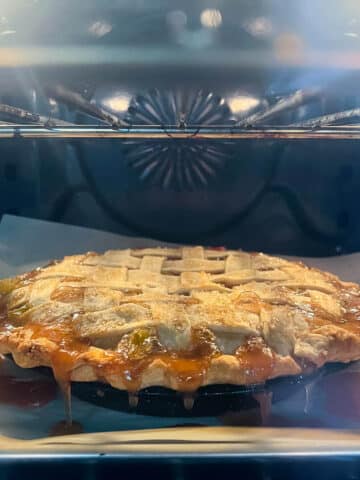
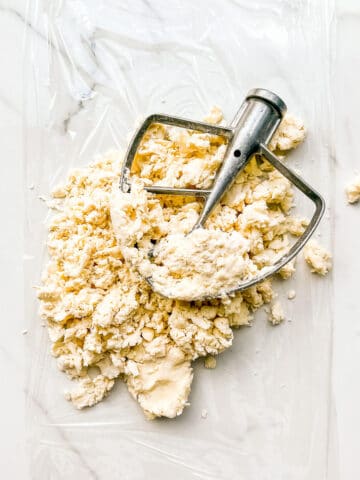
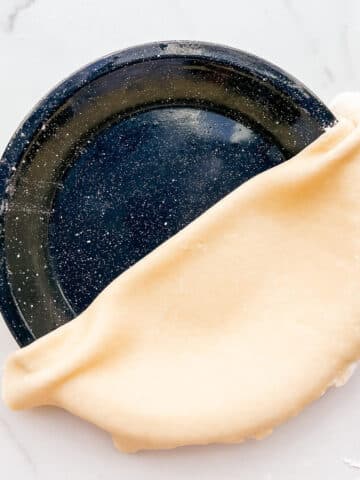
Walt Bur says
I have often wondered why homemade cakes call for creaming a fat with the sugar before mixing in the dry ingredients, yet package cake mixes don't. I have never found an answer that satisfies. You touch on this when you describe the reverse creaming method. But your explanation feels like just a teaser when you say "For the reverse creaming method, often the weight of sugar is much greater than the weight of flour, which contributes to them being more moist and fluffier, and also reduces gluten development during mixing." What does the weight difference between sugar and flour have to do with it? Could you please elaborate why packaged cake mixes come out with a nice airy texture and my creaming attempts have a courser texture. Perhaps this has to do with using AP flour versus cake flour? I guess I have two questions here, huh.
Janice says
Hi Walt,
Sugar inhibits gluten formation, so when you have an excess of sugar, your cake will have less bread-like characteristics and be more fluffy, tender, and soft. The sugar and gluten have an impact on the crumb.
Cake mix cakes tend to have more leavener in them, and are made with more liquid and more fat (since they call for oil instead of butter), and it creates a more spongy texture. The water opens up the crum through evaporation, along with the chemical leaveners that react, and it creates a very open texture. This eggless chocolate cake is a homemade version of a cake mix cake. And the texture is quite different from a cake that uses the creaming method with butter.
You are right about the type of flour having an impact. Cake mixes may rely on flours that are higher in starch and lower in protein, which also would create a lighter texture.
lekie says
I stili dont understand how to mix ingredients to make a cake
please i need the direact ways of mixing ingredients please thanks
Janice says
Hi Lekie,
Most cake recipes use the creaming method, as detailed above, where you first mix butter and sugar to incorporate air into the butter, then add the eggs, and then the dry ingredients. But it really depends on the recipe. Ideally, you would follow a recipe from a reputable site or cookbook that will tell you what ingredients to mix together and in which order. Hope that helps!
Denyse Husbands says
Good day Janice.
I will like to know if the sugar needs to dissolve completely before adding the eggs in the creaming method of a sponge cake....thank you...
Also, whenever i bake a sponge cake it always comes out with a sink in the middle of the cake when its through baking..
Please I need your advice...
Thanks so much...
Janice says
Hi Denyse, for a sponge cake where eggs are whipped with sugar, it is better that the sugar dissolves before proceeding with the dry ingredients. Otherwise, there may be a crystallized layer on the outside of the cake, or the sugar may draw out moisture later as it bakes, leading to textural imperfections. It doesn't always happen, but it can!
As for cake sinking, are you sure the cake is fully baked? Does it sink as it cools? Some sponge cakes are cooled upside down so that they don't collapse (like the Angel food cakes, for example). Otherwise, there are many reasons cakes collapse. Here is an article about it: https://bakeschool.com/cake-collapse/
Bulwa says
I made a marble cake calling for creaming method with whipped cream method. I even replaced butter with sunflower oil in that recipe. I like starting with whipping eggs, finishing with flour, cos this is easier for me. My marble cake was so delicious, I couldn’t wish for better. I just wonder if it really matters how the cake is mixed, (maybe apart from the pastry and laminated dough method, of course)...
Janice says
That's so interesting! I think you are right and that in many cases, the mixing methods lead to slight variations that most people won't notice except for the baker. Whatever method is easiest or works best for you is definitely the way to go! Thanks for your comment!